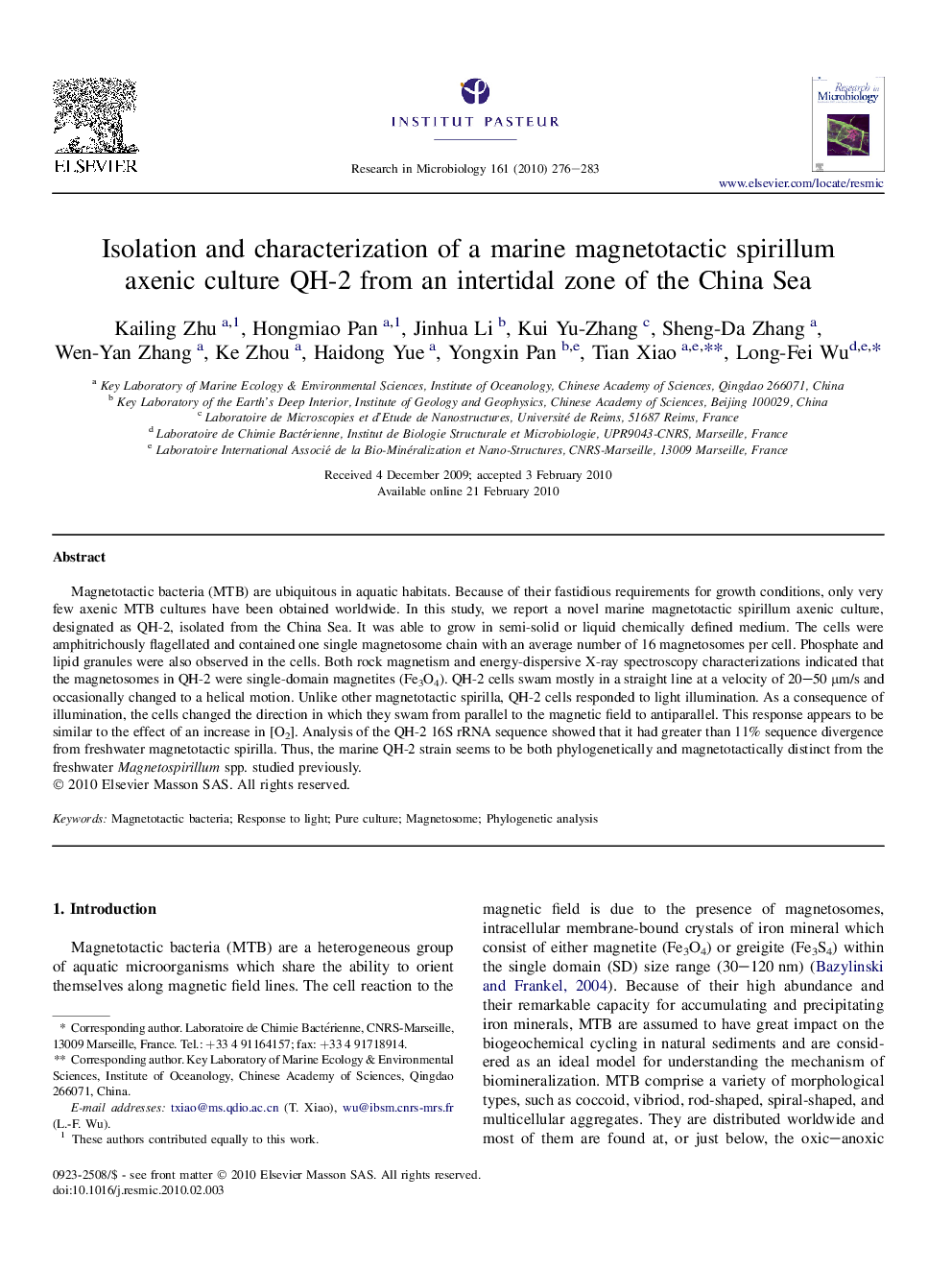| Article ID | Journal | Published Year | Pages | File Type |
|---|---|---|---|---|
| 4358924 | Research in Microbiology | 2010 | 8 Pages |
Magnetotactic bacteria (MTB) are ubiquitous in aquatic habitats. Because of their fastidious requirements for growth conditions, only very few axenic MTB cultures have been obtained worldwide. In this study, we report a novel marine magnetotactic spirillum axenic culture, designated as QH-2, isolated from the China Sea. It was able to grow in semi-solid or liquid chemically defined medium. The cells were amphitrichously flagellated and contained one single magnetosome chain with an average number of 16 magnetosomes per cell. Phosphate and lipid granules were also observed in the cells. Both rock magnetism and energy-dispersive X-ray spectroscopy characterizations indicated that the magnetosomes in QH-2 were single-domain magnetites (Fe3O4). QH-2 cells swam mostly in a straight line at a velocity of 20–50 μm/s and occasionally changed to a helical motion. Unlike other magnetotactic spirilla, QH-2 cells responded to light illumination. As a consequence of illumination, the cells changed the direction in which they swam from parallel to the magnetic field to antiparallel. This response appears to be similar to the effect of an increase in [O2]. Analysis of the QH-2 16S rRNA sequence showed that it had greater than 11% sequence divergence from freshwater magnetotactic spirilla. Thus, the marine QH-2 strain seems to be both phylogenetically and magnetotactically distinct from the freshwater Magnetospirillum spp. studied previously.
